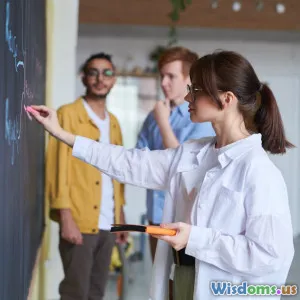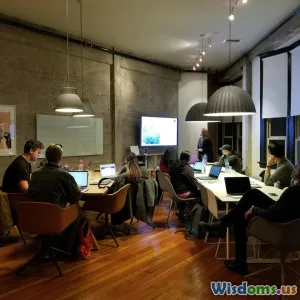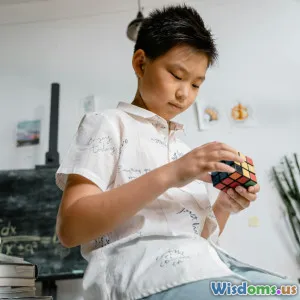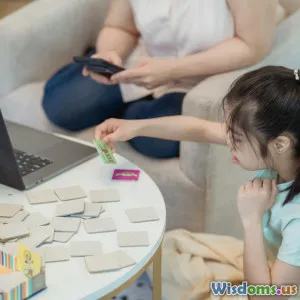
Innovative Teaching Methods
8 min read Explore cutting-edge innovative teaching methods that transform education and empower learners for the modern world. (0 Reviews)
Innovative Teaching Methods: Revolutionizing Education for the 21st Century
Introduction
In an age marked by rapid technological progress and evolving societal demands, traditional teaching methods are increasingly being challenged. How can educators ensure students are not only absorbing information but also developing critical thinking, creativity, and adaptability? The answer lies in innovative teaching methods—strategies that go beyond lecture-based, one-size-fits-all instruction to engage learners actively and personally.
These methods leverage technology, psychology, and pedagogy to create dynamic classrooms where learners become collaborators and problem-solvers. This article delves into the most effective and research-backed innovative teaching approaches, illustrating how they’re reshaping education globally and inspiring widespread adoption.
Embracing Active Learning through the Flipped Classroom Model
The flipped classroom reverses traditional teaching. Instead of introducing new material in class and assigning homework for practice, students first engage with content—videos, readings, or interactive modules—at home. Classroom time, then, is devoted to collaborative exercises, discussions, and problem-solving.
Why It Works
Research published in the Journal of Chemical Education found that students in flipped classrooms demonstrated a significant improvement in learning outcomes compared to traditional setups. Engaging with material at their own pace allows students to revisit complex topics, fostering deeper understanding.
Real-World Example
A high school in Chicago transformed its math program by flipping 10th-grade algebra classes. Teachers report enhanced classroom participation and a 20% boost in students achieving proficiency. Students also express greater confidence applying concepts during active sessions.
Gamification: Turning Learning into an Engaging Quest
Gamification integrates game elements—points, badges, leaderboards—into education to motivate and sustain learner engagement. By introducing competition, instant feedback, and clear goals, gamification tackles issues of boredom and disengagement.
Proven Benefits
Studies from the Educational Technology Research and Development journal highlight improved retention and motivation when gamification is used effectively. It aligns especially well with digital natives comfortable with interactive environments.
Application Example
Duolingo, a language-learning app, is a prime example. Its use of streaks, levels, and rewards encourages consistent practice. In classrooms, tools like Kahoot! bring gamification live, turning quizzes into exhilarating competitions that increase participation.
Personalized Learning: Tailoring Education to Individual Needs
One revolutionary approach is shifting from uniform instruction toward personalized learning—designing lessons that adapt to each student’s skill level, interests, and goals.
Tools of the Trade
AI-powered platforms such as DreamBox for math or Carnegie Learning personalize pathways, adjusting difficulty and pacing in real-time. This helps accommodate diverse learning styles and eliminate gaps.
Impact on Equity
Personalized learning is especially impactful in inclusive classrooms. For example, early evidence from the Clayton Christensen Institute shows that lower-performing students gain significantly in personalized settings.
Project-Based Learning: Connecting Theory with Real-World Application
Project-Based Learning (PBL) involves students in extended investigations of complex questions and requires them to create tangible outputs, promoting critical thinking and teamwork.
Deepening Engagement
A study in the American Educational Research Journal links PBL to improved problem-solving skills and retention. By working on relevant, often interdisciplinary projects, students see the value of their efforts beyond tests.
Case Study
At High Tech High in San Diego, PBL is core to curriculum. Students have created working solar panels, organized local history exhibits, and prototyped apps addressing community needs. The hands-on experience builds a connection to learning rare in traditional classrooms.
Technology-Enhanced Learning: Blending Digital Tools with Traditional Methods
EdTech innovations like virtual reality (VR), augmented reality (AR), and AI-driven tutors are enhancing traditional education paths, providing immersive and adaptive learning experiences.
Evidence of Effectiveness
Research from Stanford University highlights VR’s role in increasing student motivation and spatial understanding. VR history tours and AR anatomy models transcend textbook limits.
Examples in Practice
Teachers utilize platforms like Nearpod to create interactive lessons where students participate in polls and quizzes in real-time. AI tutors (e.g., Squirrel AI in China) customize lessons while freeing up teachers for more personalized support.
Social and Emotional Learning (SEL) Strategies Integrated with Instruction
Innovative methods now incorporate SEL to nurture emotional intelligence alongside academic growth. Techniques such as mindfulness, peer collaboration, and reflective journaling foster resilience and communication skills.
Why SEL Matters
According to CASEL (Collaborative for Academic, Social, and Emotional Learning), SEL programs can improve academic performance by 11 percentile points. Equipping students to manage emotions enhances classroom climate and readiness to learn.
Practical Implementation
The Responsive Classroom approach combines SEL with engaging academics. Schools reporting successful adoption note reductions in behavioral incidents and increased student enthusiasm.
Conclusion
The landscape of education is undergoing a radical shift. Innovative teaching methods—flipped classrooms, gamification, personalized learning, project-based inquiry, immersive technology, and SEL integration—are proving their merit by fostering engagement, individual growth, and real-world skill development.
For educators, adopting these methods requires mindset shifts and often structural changes, but the payoff is evident: learners equipped for complex challenges of tomorrow’s world. For students, it means education that inspires curiosity, creativity, and lifelong learning.
As schools, policymakers, and communities embrace these innovations, the future of learning looks not just different, but brighter—more human-centered and impactful. Now is the time to reflect on and invest in these approaches that transform education from a static transfer of information into a dynamic, inclusive journey of discovery.
“Education is not preparation for life; education is life itself.” — John Dewey
Innovative teaching methods ensure this life is richer, more relevant, and deeply engaging for every learner.
Rate the Post
User Reviews
Popular Posts





















